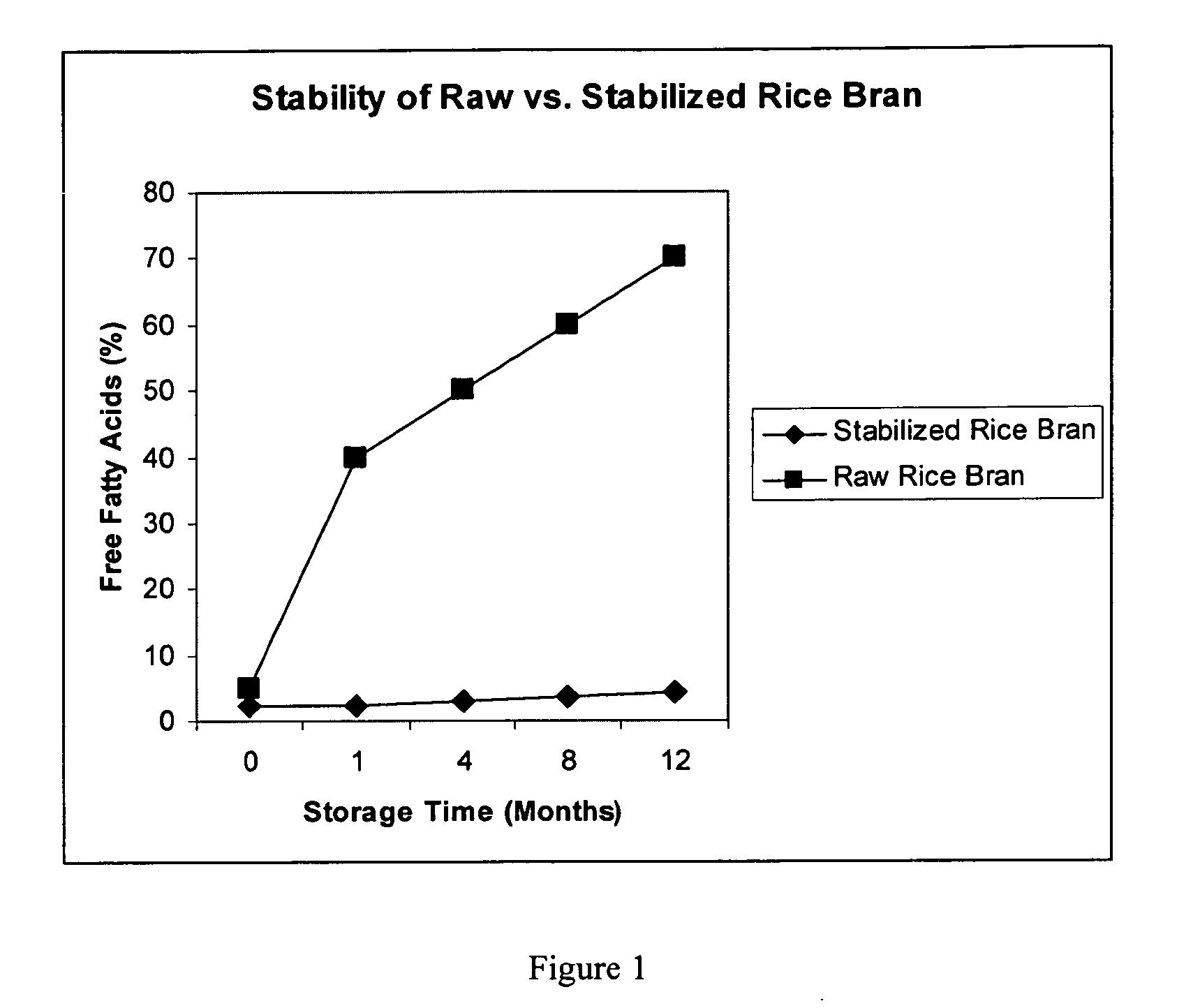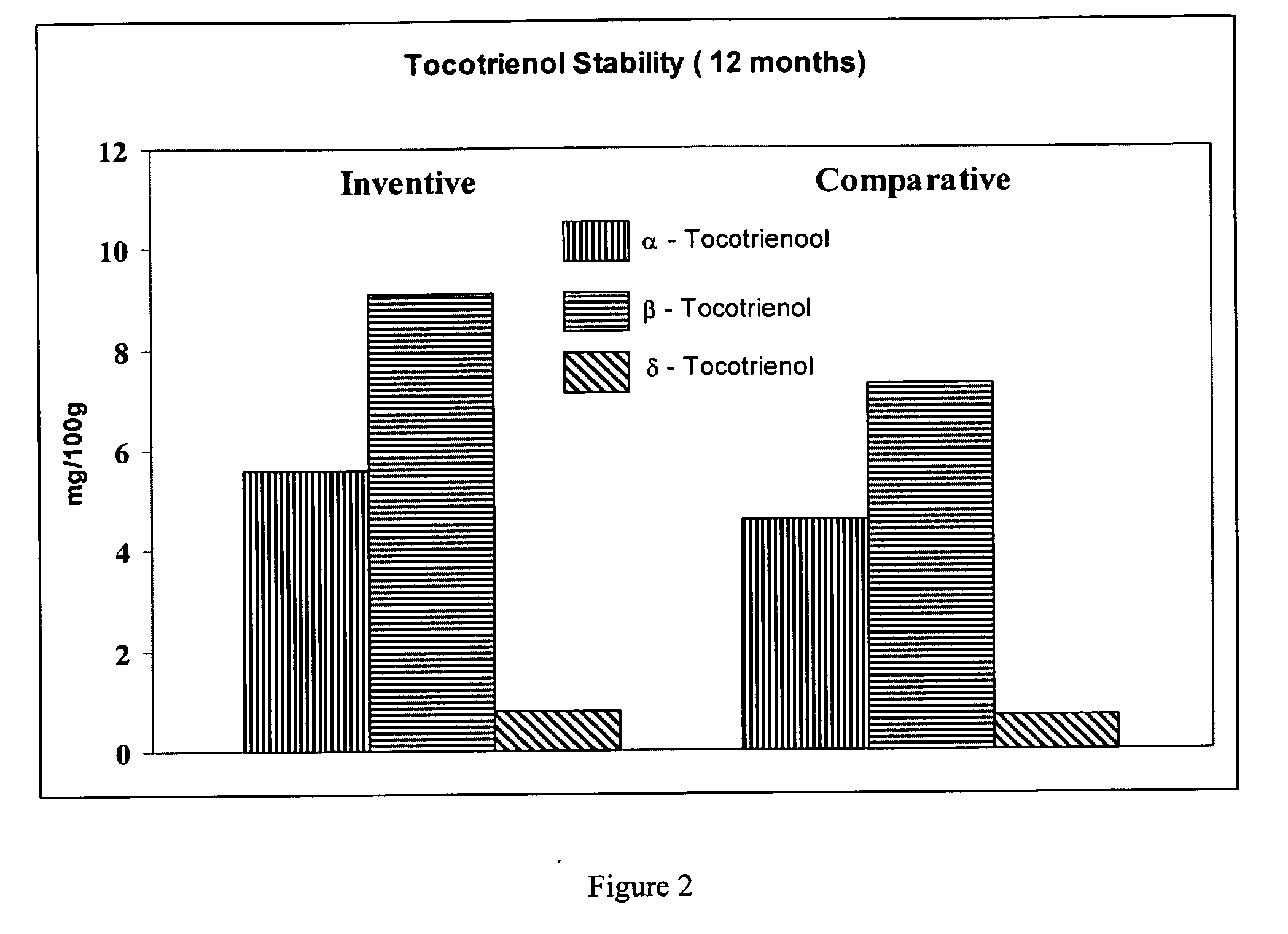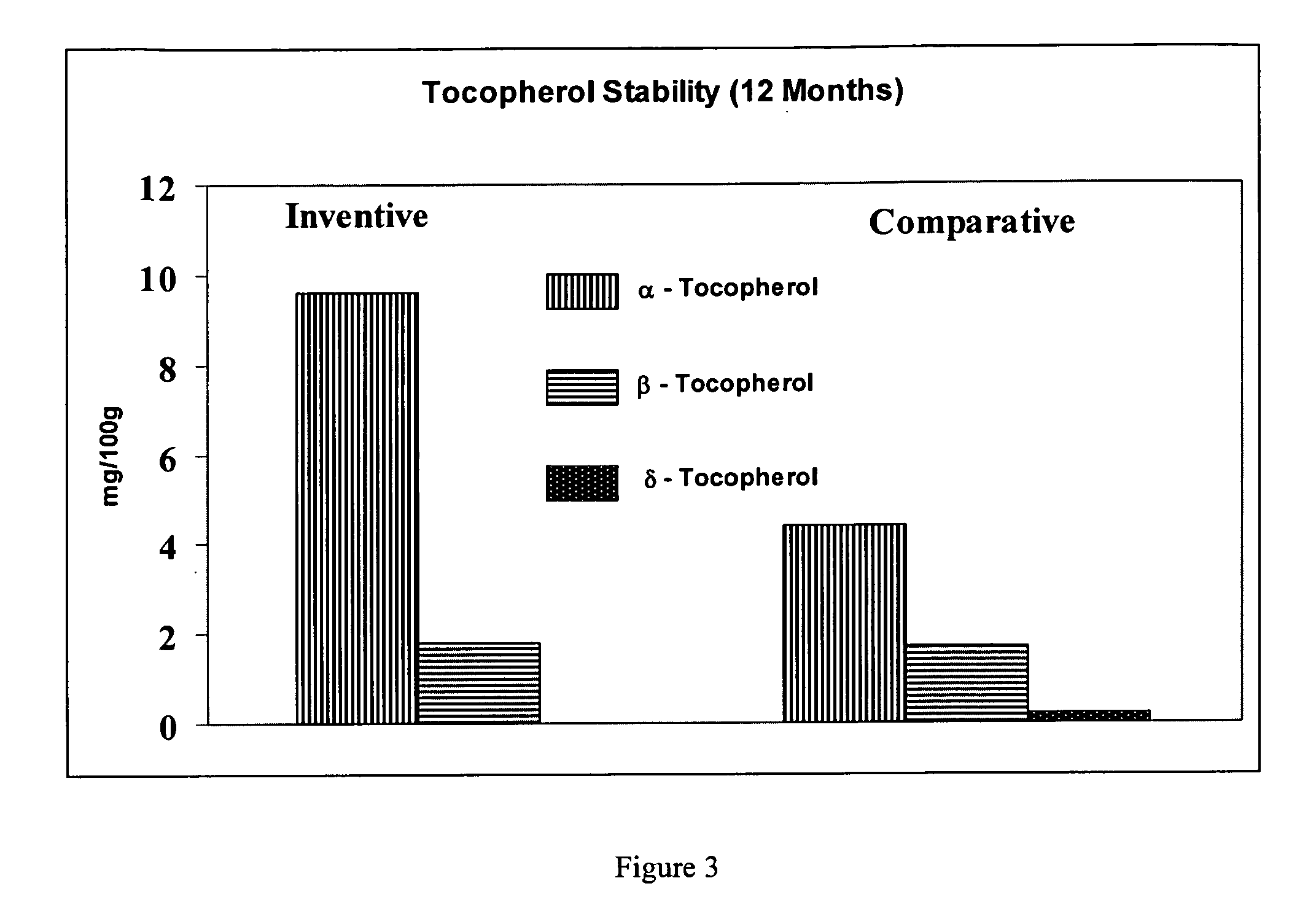Mechanical extrusion process for stabilizing cereal and oil seed bran and germ components
a technology of mechanical extrusion and stabilizing process, which is applied in grain treatment, grain milling, agriculture, etc., can solve the problems of reducing functional characteristics, affecting the stability of whole grain components, so as to maintain a level of moisture content
- Summary
- Abstract
- Description
- Claims
- Application Information
AI Technical Summary
Benefits of technology
Problems solved by technology
Method used
Image
Examples
example 1
Monitoring the FFA Content in the Raw Rice Bran / Germ Fraction and in the Stabilized Rice Bran / Germ Fraction
[0061]The rice bran / germ fraction was stabilized using a mechanical extruder having a 125 hp / 1100 rpm drive motor, and the following parameters: the bran / germ fraction was fed into the extruder at 1500 kg / hr, at a stabilization temperatures of about 141° C. and water added at a rate of 27 to 54 liters / hr.
[0062]In the determination of the FFA content in the oil derived from raw rice bran and in the stabilized rice bran / germ fraction, American Oil Chemists Society's (AOCS) Official Method Ca 5a-40 was followed. Stabilized bran samples were adjusted to 11% moisture content (similar to raw rice bran) prior to lipid extraction. Oil was extracted from 10 gram sample with hexane in a Soxhlet extractor for at least 6 hours and recovered in a total volume of 100 ml. FFA content was determined by removing the solvent from 10 ml of extract, dispersing the oil residue in 75 ml of isopropyl...
example 2
Microbial Load in the Stabilized Rice Bran / Germ Fraction
[0068]The microbial load in the stabilized bran / germ fraction was determined using the Association of Analytical Communities (AAOC) Method 990.12 (Aerobic plate count in food) and Method 997.02 (Yeast and mold count in food). The total plate count (TPC) in the stabilized rice bran / germ fraction was found to be under 10,000 cfu / gram of stabilized bran / germ fraction. The total number of coliform bacteria per gram of stabilized of bran / germ material was less than 100. Similarly, as shown in the Table 1, the frequency of E. coli, Salmonella, yeast and mold were all significantly very low in the stabilized bran / germ fraction.
[0069]Rice bran stabilized by the mechanical extrusion process of the present invention has one of the lowest microbial loads in the cereal industry. This low load is critical for stabilizing bran and germ components because these components have a high propensity for degradation and infestation due to their rel...
example 3
Determination of Anti-Oxidative Content in the Stabilized Rice Bran / Germ Fraction
[0070]The amounts of various types of tocopherols and tocotrienols present in the stabilized bran as compared to the amounts present in the raw rice bran were determined using the Official method Ce 8-89 of American Oil Chemists Society (AOCS). High temperatures and pressures, which can be utilized in many extrusion processes, can destroy the vitamin and nutrient value of an extruded product. In order to demonstrate that the present mechanical extrusion stabilization process does not destroy the anti-oxidants present in the rice bran / germ fraction during the stabilization process, the quantity of the various forms of tocotrienol and tocopherol compounds present in the stabilized rice / germ fraction were determined, and compared with the amounts present in the fresh raw rice bran / germ fraction. The results shown in FIGS. 2 and 3 indicate the stabilize rice bran did not show any decrease in the amount of a...
PUM
 Login to View More
Login to View More Abstract
Description
Claims
Application Information
 Login to View More
Login to View More - R&D
- Intellectual Property
- Life Sciences
- Materials
- Tech Scout
- Unparalleled Data Quality
- Higher Quality Content
- 60% Fewer Hallucinations
Browse by: Latest US Patents, China's latest patents, Technical Efficacy Thesaurus, Application Domain, Technology Topic, Popular Technical Reports.
© 2025 PatSnap. All rights reserved.Legal|Privacy policy|Modern Slavery Act Transparency Statement|Sitemap|About US| Contact US: help@patsnap.com



